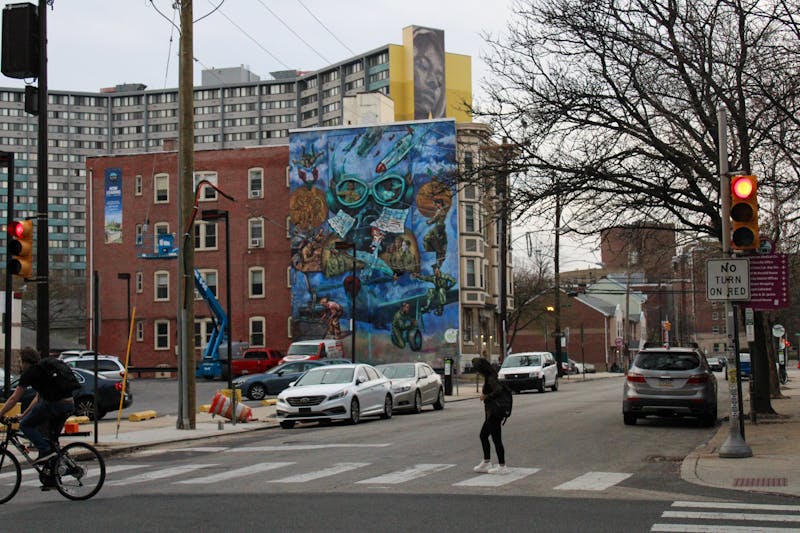
Columnist Ingrid Holmquist explores the double standards regarding safety concerns at Penn.
Credit: Jean ParkContent warning: This article contains descriptions of physical abuse and racial discrimination that may be disturbing and/or triggering for some readers.
Somehow, the topic of crime at Penn is inexhaustible. School alerts and news stories instill fear and anger among students regularly. But in conversations about crime on this campus exists one glaring oversight: the kind of crimes committed by Penn students. And I’m not talking about underage drinking, drug possession, or even unnecessary shoplifting. I’m referring to the violent crimes perpetrated by Penn students, the kind left unreported and unprosecuted because of the demographics of those who commit them.
In October, I authored a deeply controversial column about Penn students’ attitudes toward crime in our urban community. While the original point was to argue against gentrification as a remedy for crime, many readers felt that I was diminishing their fears or personal experiences. One even offered this anecdote on Sidechat: “[T]o whatever idiot wrote the dp article about crime at penn not really being that bad.. i literally was chased down 40th to my dorm by two men in masks screaming at me on a weeknight coming back from huntsman.”
I have no idea whether this event actually occurred, but that really isn’t the point. I use the quote above to demonstrate a pattern I’ve noticed: At Penn, we have certain ideas about what crime looks like. It’s masked men chasing you to your dorm. A stalker lurking in the shadows. A threat from an unhoused person outside a convenience store. Penn students never hear “crime” and think of the guy in the back of your class who sexually assaulted someone last weekend. They don’t think about racist assaults at parties. They certainly don’t think about fraternities brutalizing pledges in hazing rituals.
It doesn’t matter that all of these highly prevalent occurrences are considered felonies. Somehow, we are different. It seems that we are separated from true “criminals” by iron gates and branded clothing, and the violence we commit against each other becomes silly antics and drunken indiscretions. But if we are serious about keeping our students safe, we need to reevaluate how we view violence at this institution. Enough with blaming it all on other people — we must weed it out from our own community first.
The violence is here. Sexual assault is the most common crime on American college campuses, making up 44% of all incident reports, and Penn is no outlier. In the 2023-24 academic year, there were 26 reported instances of Penn students engaging in sexual misconduct, including relationship violence, sexual harassment, sexual violence, and stalking. This number is likely an underestimate given the low report rate of sexual violence, especially on college campuses. That’s double the number of alcohol violations, over four times the number of theft reports, and more than vandalism and trespassing instances combined.
How can we say we want to protect student safety when we continue to perpetuate a culture of sexual violence? How on Earth can we see the prevalence of sexual assault and still feel that student safety is most threatened by strangers? Penn students are far more likely to experience an assault of this kind at the hands of a classmate than a random predator on the street.
There is also no shortage of physical assault by students at Penn. While the school has reported no instances of student-committed assaults in the past two years, there were eight in the 2021-22 school year. One of these was the notorious Psi Upsilon fraternity assault, in which a student was beaten into semiconsciousness after he was allegedly called racist slurs. He suffered severe injuries. This event was predated by numerous assaults against students of color at fraternities, representing a pattern of violent racism at Penn.
Not only do Penn students perpetrate the types of violence we fear, but we also create our own depraved kinds. Hazing rituals are perhaps one of the cornerstones of Penn student life, no matter how much the University minimizes their prevalence. The practice doesn’t just exist in greek life — it also bleeds into other clubs and student organizations. It’s one of the most commonly and consistently reported incidents at Penn, with almost 50 complaints filed in the past four years. And while it hasn’t happened at Penn yet, it’s known that hazing violence can escalate quickly, and that it is often deadly.
So while there are some instances of crime being committed against Penn students by strangers, there are far more instances of Penn students committing crimes against each other. We must let go of the assumption that violence is more damaging or criminal when it is perpetrated by someone outside of this school.
It makes us feel better, safer, to think of crime as something that only exists past 40th Street, outside our college houses guarded by Penn Police. But violence originates at Penn. It lives in dorm rooms and fraternity houses, in hallways and in basements. It is perpetrated by our classmates and friends. Our affiliation with this University doesn’t change the nature of our violence, and it doesn’t mean we do any less harm.
INGRID HOLMQUIST is a College sophomore from Silver Spring, Md. studying urban studies. Her email is ingridhh@sas.upenn.edu.
The Daily Pennsylvanian is an independent, student-run newspaper. Please consider making a donation to support the coverage that shapes the University. Your generosity ensures a future of strong journalism at Penn.
Donate










